FCER1A
-
Official Full Name
Fc fragment of IgE, high affinity I, receptor for; alpha polypeptide -
Overview
Binds to the Fc region of immunoglobulins epsilon. High affinity receptor. Responsible for initiating the allergic response. Binding of allergen to receptor-bound IgE leads to cell activation and the release of mediators (such as histamine) responsible for the manifestations of allergy. The same receptor also induces the secretion of important lymphokines. -
Synonyms
FCER1A;Fc fragment of IgE, high affinity I, receptor for;alpha polypeptide;FCE1A;high affinity immunoglobulin epsilon receptor subunit alpha;Fc-epsilon RI-alpha;Fc epsilon RI alpha-chain;igE Fc receptor subunit alpha;Fc IgE receptor, alpha polypep
Recombinant Proteins
- Human
- Rat
- Cynomolgus
- Mouse
- HEK293
- Mammalian Cells
- E.coli
- Wheat Germ
- Human Cells
- Yeast
- In Vitro Cell Free System
- His
- Avi
- Fc
- SUMO
- GST
- Non
Background
What is FCER1A protein?
FCER1A (Fc epsilon receptor Ia) gene is a protein coding gene which situated on the long arm of chromosome 1 at locus 1q23. The immunoglobulin epsilon receptor (IgE receptor) is the initiator of the allergic response. When two or more high-affinity IgE receptors are brought together by allergen-bound IgE molecules, mediators such as histamine that are responsible for allergy symptoms are released. This receptor is comprised of an alpha subunit, a beta subunit, and two gamma subunits. The protein encoded by this gene represents the alpha subunit. The FCER1A protein is consisted of 257 amino acids and its molecular mass is approximately 29.6 kDa.
What is the function of FCER1A protein?
FCER1A protein is a high-affinity IgE receptor α chain, mainly expressed on the surface of mast cells and basophils, and its function is mainly focused on the regulation of immune response and the process of participating in allergic reactions. When it binds to IgE antibodies, it can trigger the signal transduction process, resulting in the release of inflammatory mediators, such as histamine and leukotrienes. These mediators play a key role in allergic reactions, such as asthma, eczema, rhinitis and other diseases.
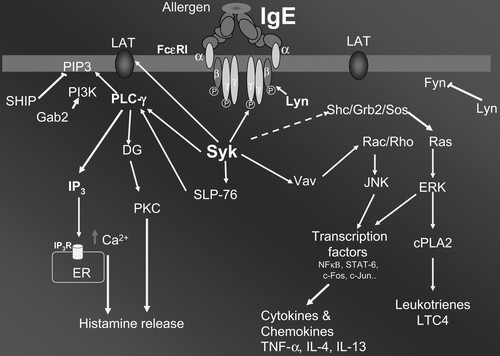
Fig1. Schematic diagram of FcεRI-mediated signaling events in mast cells. (Abdelilah Soussi Gounni, 2006)
FCER1A Related Signaling Pathway
1. High-affinity IgE receptor signaling pathway: FCER1A protein is the α chain of high-affinity IgE receptor, which can trigger the signal transduction process after binding to IgE antibodies.
2. Mast cell and basophil activation signaling pathway: FCER1A protein binds to IgE antibody and releases inflammatory mediators through activation of mast cells and basophil.
FCER1A Related Diseases
When dysregulated, it can elicit harmful life-threatening allergic and anaphylactic reactions. Related diseases include: 1. Allergic diseases, such as asthma, allergic rhinitis, eczema, etc. 2. Immune deficiency diseases such as mastocytosis. 3. Autoimmune diseases, such as systemic lupus erythematosus.
Bioapplications of FCER1A
In terms of clinical applications, FCER1A protein may be used as a therapeutic target, and therapeutic strategies for certain allergies or inflammatory diseases may involve regulating or interfering with FCER1A protein-related signaling pathways to suppress the occurrence of immune responses and inflammatory processes. In addition, the FCER1A protein may also be used as a target for novel drugs, with potential applications for the development of new treatments for allergic and inflammatory diseases.
Case Study
Case study 1: Alexandra M Greer, 2014
The high-affinity IgE receptor FcεRI is constitutively expressed in mast cells and basophils and is required for transmitting stimulatory signals upon engagement of IgE-bound allergens. FcεRI is also constitutively expressed in dendritic cells (DCs) and monocytes in humans; however, the specific functions of the FcεRI expressed by these cells are not completely understood.
In this study, FcεRI expressed by human blood DC antigen 1-positive (BDCA1+) DCs and monocytes, but not basophils, traffics to endolysosomal compartments under steady-state conditions. Furthermore, IgE bound to FcεRI on BDCA1+ DCs was rapidly endocytosed, transported to the lysosomes, and degraded in vitro. These findings strongly suggest that constitutive internalization of human FcεRI by DCs and monocytes distinctively contributes to serum IgE clearance.
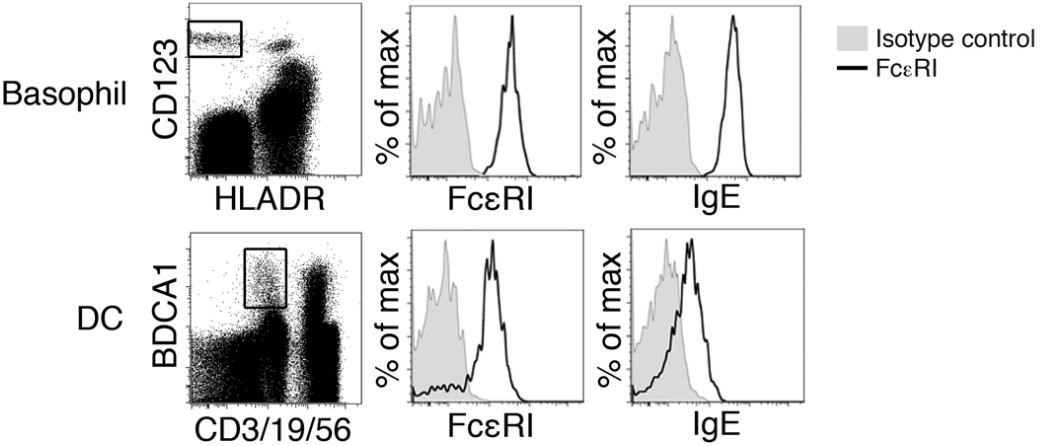
Fig1. Gating strategy of human basophils and DCs, and histograms of surface FcεRI expression and surface IgE bound to the cells.
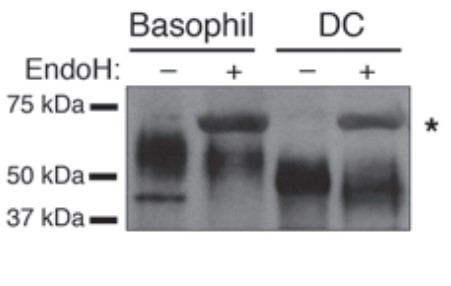
Case study 2: David M Cauvi, 2006
The human high affinity IgE receptor (FcepsilonRI) is a central component of the allergic response and is expressed as either a trimeric alphagamma2 or tetrameric alphabetagamma2 complex. It has been previously described that the cytoplasmic domain (CD) of the alpha-chain carries a dilysine motif at positions -3/-7 from the C terminus that functions in intracellular retention prior to assembly with other FcepsilonRI subunits. In this report the researchers have further explored the role of the -3/-7 dilysine signal in controlling steady-state alpha-chain transport by mutational analysis.
They compared the transport properties of a series of alpha-chain cytoplasmic domain truncation mutants and performed alanine-scanning mutagenesis. Furthermore, co-mutation of the Lys(212)-Lys(216) residues with the -3/-7 dilysine signal produced a dramatic increase in alpha-chain surface expression.
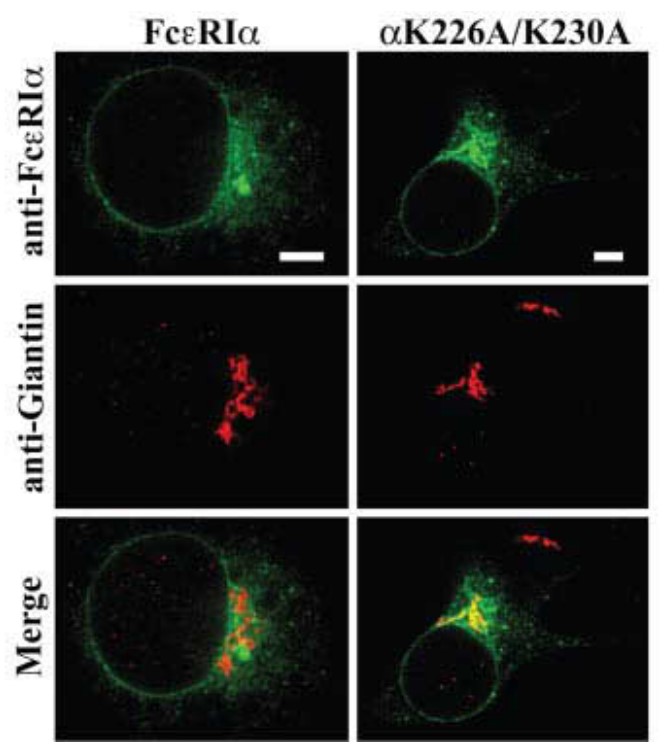
Fig3. The intracellular expression of human wt FcϵRI α-chain and the -3/-7 dialanine mutant K226A/K230A in transfected COS-7 cells was visualized with an anti-FcϵRIα mAb 15-1 and anti-giantin Ab with co-localization shown in yellow in the merged images.
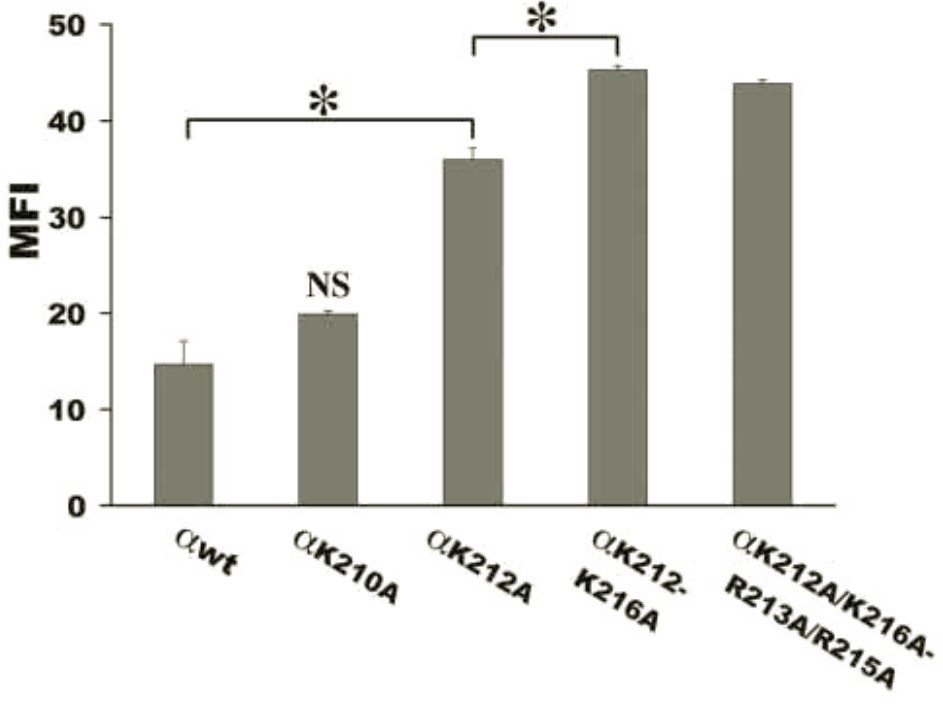
Quality Guarantee
High Purity
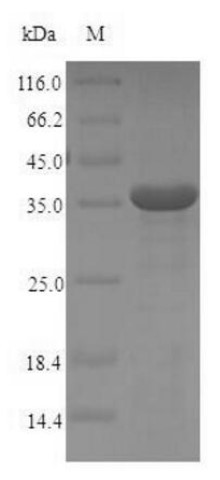
Fig1. SDS-PAGE (FCER1A-1209H) (PROTOCOL for western blot)
High Bioactivity
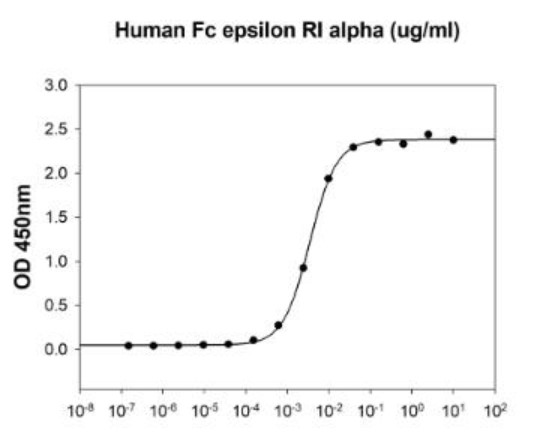
Fig2. Activity Data. (FCER1A-25H)
Involved Pathway
FCER1A involved in several pathways and played different roles in them. We selected most pathways FCER1A participated on our site, such as Sphingolipid signaling pathway,Phospholipase D signaling pathway,Fc epsilon RI signaling pathway, which may be useful for your reference. Also, other proteins which involved in the same pathway with FCER1A were listed below. Creative BioMart supplied nearly all the proteins listed, you can search them on our site.
| Pathway Name | Pathway Related Protein |
|---|---|
| Phospholipase D signaling pathway | GNAS,AVPR1B,GRM4,RAF1,AKT1,DGKE,PIK3R2,RRAS,PPAP2B,RALGDS |
| Asthma | H2-AA,IL3,EPX,IL9,HLA-DOB,HLA-DQA1,CD40,IL10,HLA-DQA2,IL5 |
| Sphingolipid signaling pathway | MAPK8,TRP53,NSMAF,SPHK1,MAP2K1,MAPK9,SPHK2,GAB2,MAP3K5,PPP2R5B |
| Fc epsilon RI signaling pathway | VAV3,LCP2,MAPK3,MAPK9,FCER1G,MAPK10,VAV1,MAP2K2,AKT2,PIK3R2 |
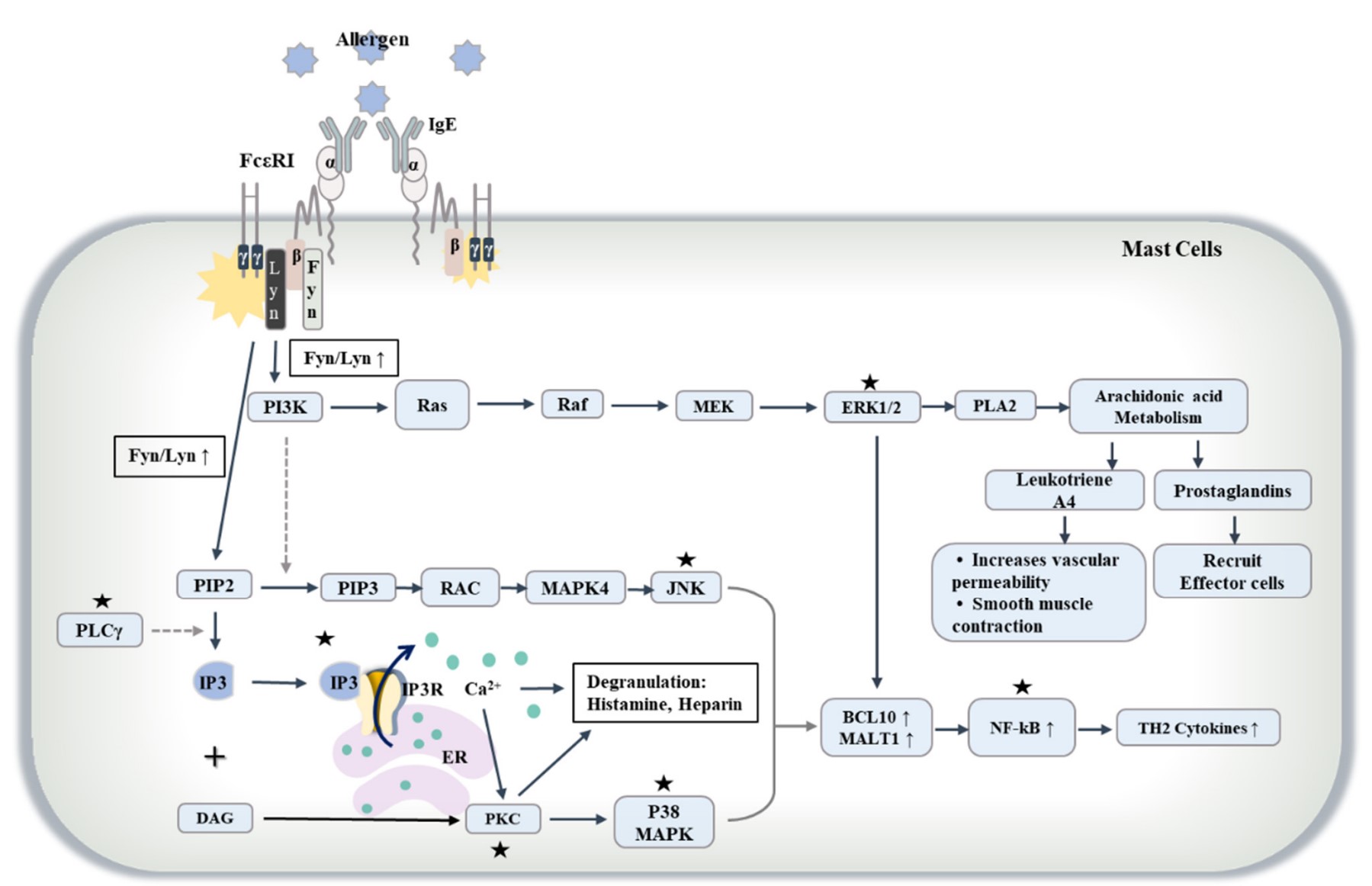
Fig1. FcεRI signaling in allergic inflammation. (Hyein Jo, 2022)
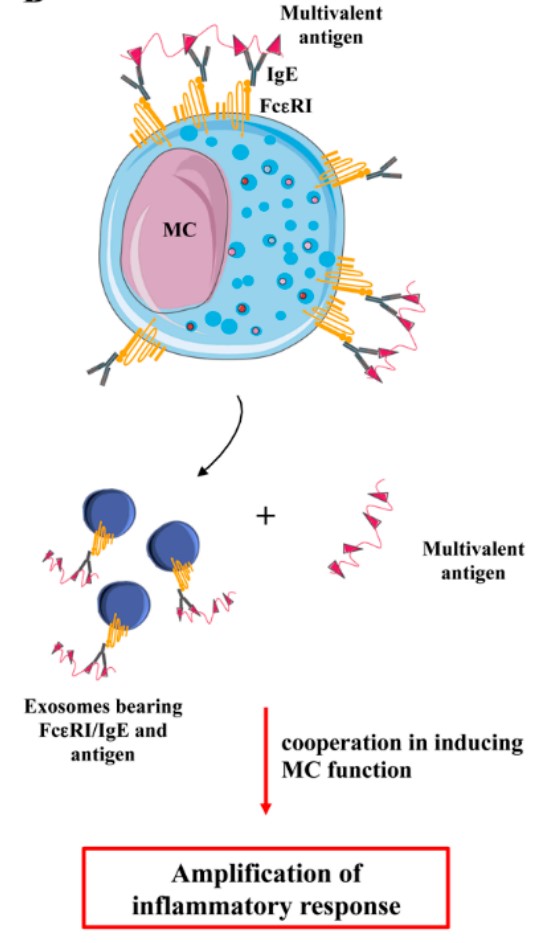
Fig2. Upon FcεRI engagement by means of IgE loading followed by antigen stimulation, MCs release exosomes bearing receptors, IgE, and antigens that can cooperate with soluble multivalent antigens to amplify the inflammatory response. (Mario Lecce, 2020)
Protein Function
FCER1A has several biochemical functions, for example, IgE binding,IgE receptor activity. Some of the functions are cooperated with other proteins, some of the functions could acted by FCER1A itself. We selected most functions FCER1A had, and list some proteins which have the same functions with FCER1A. You can find most of the proteins on our site.
| Function | Related Protein |
|---|---|
| IgE receptor activity | MS4A2,FCER1G,CD247L |
| IgE binding | MS4A2,LGALS3,FCER1G,Fcer2a,FCER2,CD247L |
Interacting Protein
FCER1A has direct interactions with proteins and molecules. Those interactions were detected by several methods such as yeast two hybrid, co-IP, pull-down and so on. We selected proteins and molecules interacted with FCER1A here. Most of them are supplied by our site. Hope this information will be useful for your research of FCER1A.
PDHB
Resources
Research Area
Related Services
Related Products
References


